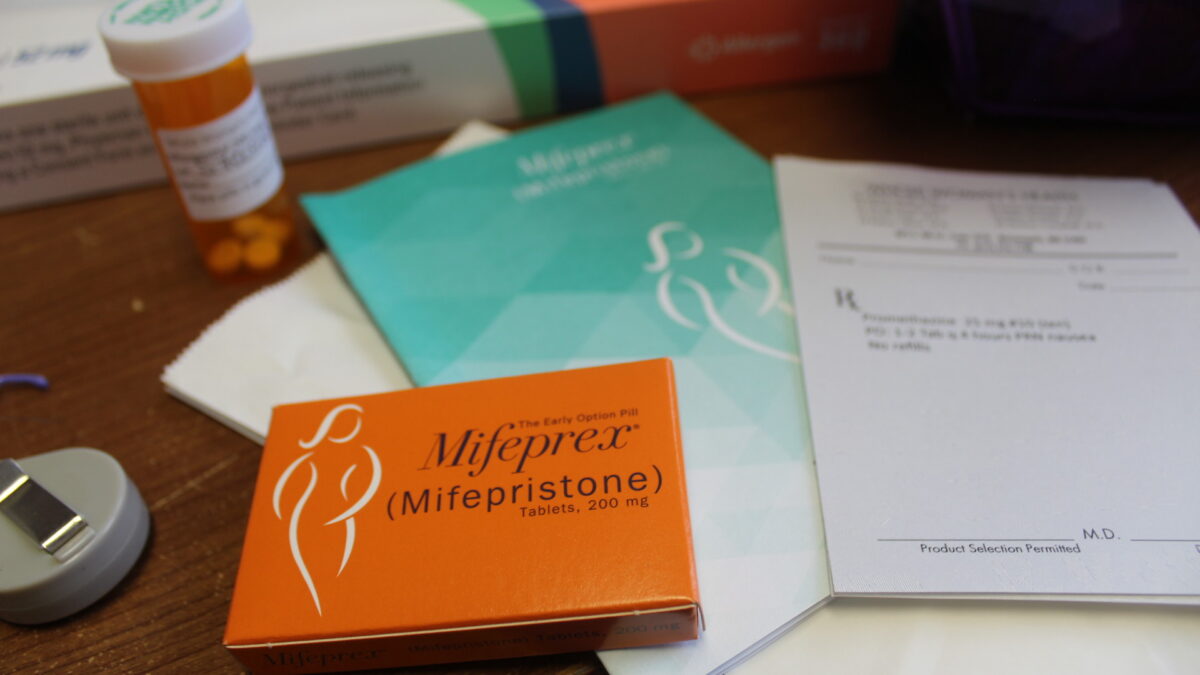Now that the Supreme Court has returned abortion control to the states, and thus the voters, the next political battle will be over access to abortion drugs, which now constitute 54 percent of all terminated pregnancies in the United States today.
According to the Wall Street Journal, two medications — mifepristone and misoprostol — are typically used in a chemical abortion regimen. A single dose of mifepristone (Brand name: Mifeprex) is followed by a regimen of misoprostol (Brand name: Cytotec), depending on the number of weeks into the pregnancy. Reproductive health experts contend the drugs are safe and have efficacy rates of 95 percent if administered at 10 weeks of pregnancy or earlier.
Costs for a chemical abortion vary by state but range from $350 for a remote telehealth consultation to $750 for an in-person consultation, the Journal stated. Most health insurance plans pay for these drugs, and Medicaid would if the abortion is needed in the case of rape, incest, or to protect the life of the mother.
The U.S. Food and Drug Administration approved Mifeprex in 2000 and its use has grown steadily vs. surgical abortions. According to data from the pro-abortion Alan Guttmacher Institute, chemical abortions account for more than half of all abortions today compared to just 36 percent in 2017. The drug is only approved for use up to 10 weeks, but because the FDA doesn’t regulate medical practice, doctors could conceivably assume the risk and prescribe it beyond 10 weeks.
On Dec. 16, 2021, the FDA removed the in-person dispensing requirement for mifepristone and expanded the distribution to certified pharmacies and certified clinicians. This change allows for the distribution of abortion drugs by mail in states that do not restrict telehealth for chemical abortions. Despite the change to the in-person requirement, prescribers are still required to be certified by the manufacturers.
In response to the Dobbs decision, allowing states to regulate abortion, Republican Tennessee Gov. Bill Lee signed a bill making mail-order abortion pills illegal in the state, and Louisiana’s governor signed into law a bill that outlawed out-of-state providers from mailing abortion pills, punishable by up to 10 years in prison and a $75,000 fine, effective Aug. 1. South Dakota Republican Gov. Kristi Noem, a potential GOP presidential candidate in 2024, signed a bill restricting chemical abortions via telemedicine.
According to the Guttmacher Institute, at least “19 states require the clinician providing a medication abortion to be physically present when the medication is administered, thereby prohibiting the use of telemedicine to prescribe medication for abortion.” Seven such requirements were passed just last year, along with six new laws banning the mailing of abortion pills, according to The New York Times.
Can States Override the FDA?
However, two legal restraints on the states will likely make it difficult for them to curtail abortion drug prescribing, including mail-order bans.
The first is the Commerce Clause of the Constitution. Article 1, Section 8, Clause 3 gives Congress the power “to regulate commerce with foreign nations, and among the several states, and with the Indian tribes.” Over the past 80 years, the Supreme Court has substantially curtailed the ability of states to regulate interstate commerce.
The second is FDA preemption. Because Congress designated the FDA with the power to review and approve applications for drugs, devices, and medical products, states cannot impose restrictions of their own.
U.S Attorney General Merrick Garland said in a statement the day the U.S. Supreme Court overturned Roe v. Wade, that “States may not ban Mifepristone based on disagreement with the FDA’s expert judgment about its safety and efficacy.” He vowed to go to court to protect chemical abortions, and one can assume the pharmaceutical industry will, too.
States have not been successful in banning or curtailing other FDA-approved drugs, notably in California last year, which tried to ban the practice of generic drug makers accepting payments to hold off on the marketing of lower-cost prescription medicines, and in Massachusetts in 2014, when the state tried to prohibit an abuse-resistant opioid drug.
As a result, efforts by a number of states to curtail abortion in wake of the overturning of Roe v. Wade might not make a significant difference.
For example, newly elected Virginia Gov. Glenn Youngkin, a Republican, is seeking legislation to ban abortion after 15 weeks of pregnancy, with exceptions for rape, incest, and to protect the life of the mother. However, only 3 percent of abortions in Virginia in 2019 (latest data available) occurred after 15 weeks- fewer than 400. Without passing any laws addressing chemical abortions, most abortions in Virginia will proceed as usual.
Much has been reported about 13 states having “trigger laws;” essentially laws that banned or curtailed abortion pre-Roe that remained on the books, and which then became law when Dobbs was decided. Of those states, only in Missouri would a majority of abortions become illegal, according to CDC data.
Ohio and Texas have enacted restrictions on abortion after six weeks of pregnancy. However, CDC data indicates that if abortions prior to 10 weeks are induced by Mifeprex/Misoprostol, some 62 percent would continue in Ohio and 80 percent in Texas due to the drugs’ availability.
Additionally, 26 states are likely not to stiffen abortion laws so surgical abortions will remain available to women who wish to travel to abort unborn children.
The left is in hysteria about the Dobbs ruling, hoping it will boost Democratic turnout for candidates facing certain defeat this fall due to the eroding economy. But a closer look at what laws the red states are actually passing shows that many abortions will continue, as many states are going to great lengths to accommodate exemptions.
Had pro-abortion extremists not contested Mississippi’s 15-week ban, Roe v. Wade might be intact today.









